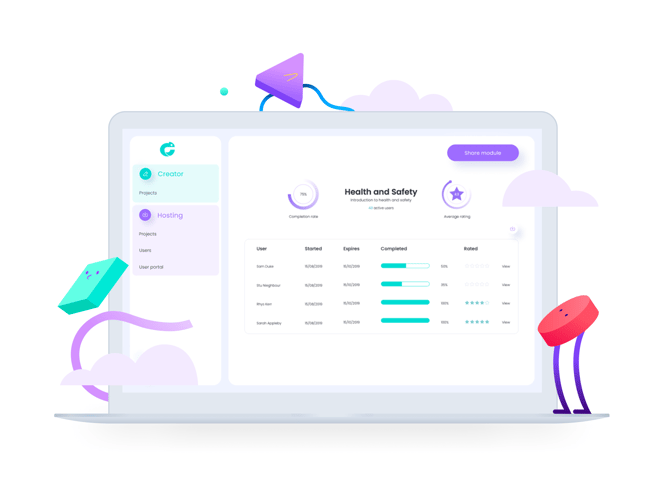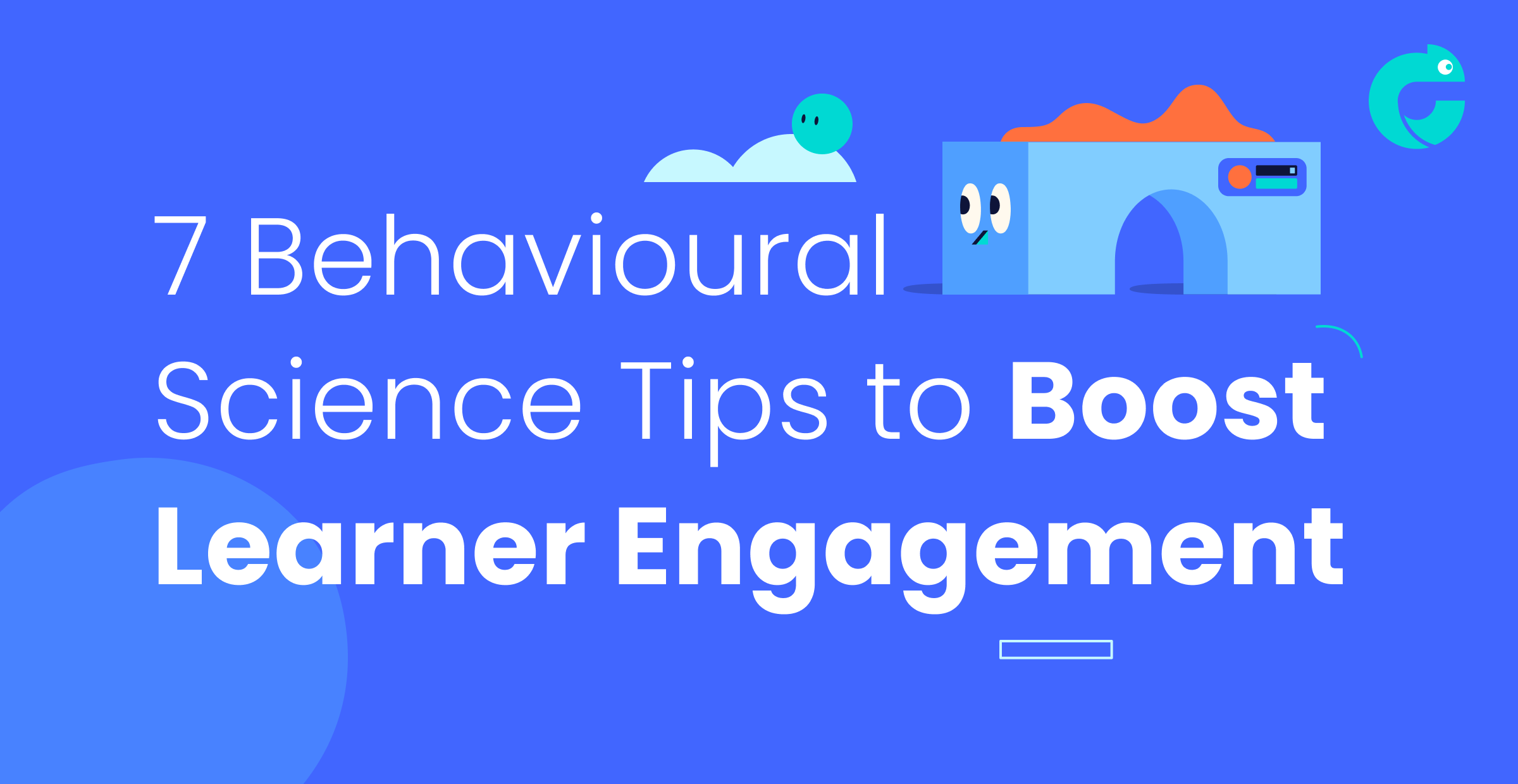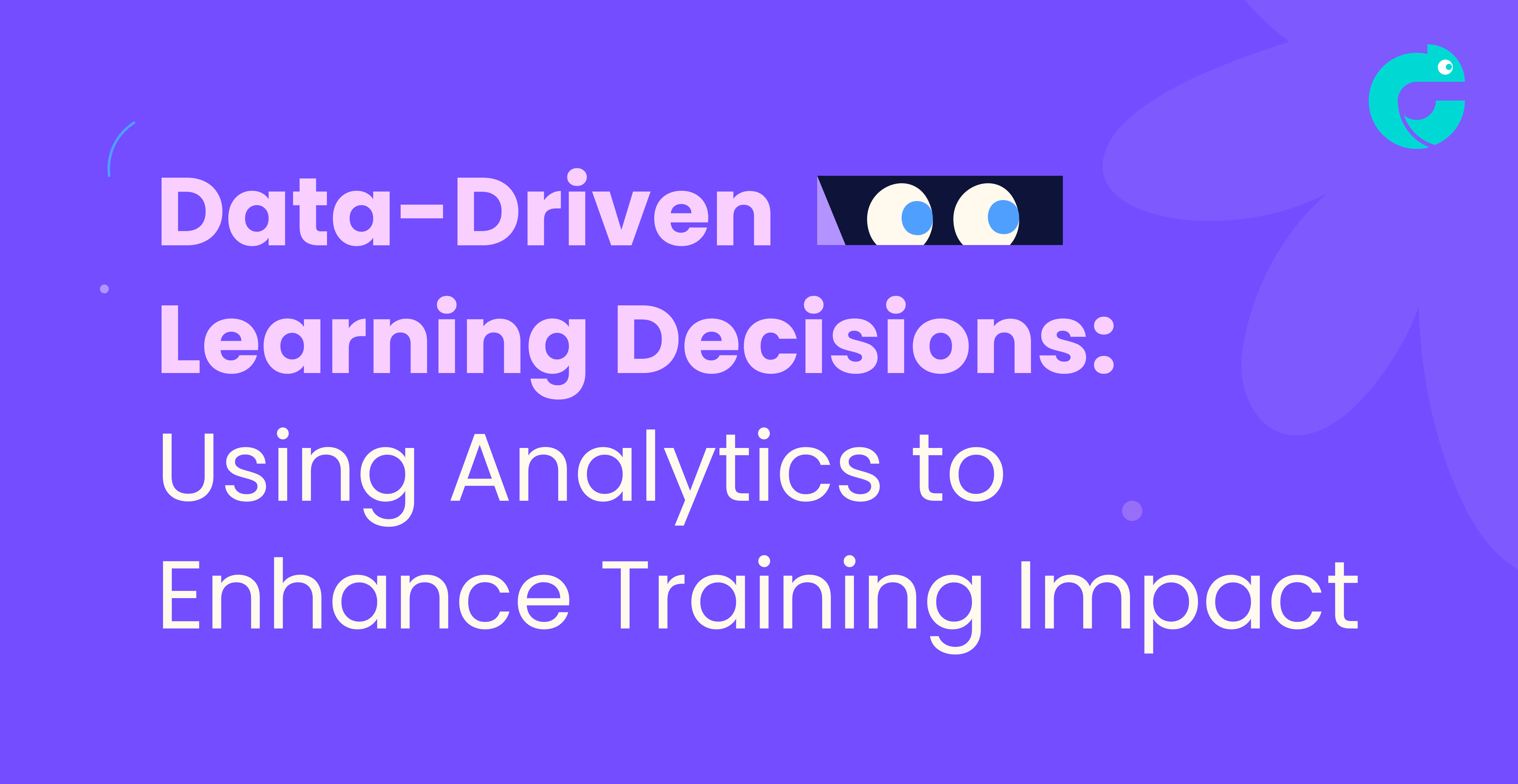No one we know in L&D is cruising through their week feeling the vibes. Everyone’s scrambling. Screaming through their to do list, just trying to keep their nose above water. But sometimes you gotta slow down to speed up, and assessing your learning tech needs is one of those times …
You’ve heard the saying, keep doing what you’ve always done, keep getting what you’ve always got. Well, that saying’s overly optimistic. Truth is, if you keep doing what you’ve always done, you start to experience the law of diminishing returns because the world moves on without you. And that’s just as true in L&D, especially when it comes to tech.
L&D is at a tech crossroads
Right now, we’re at a crossroads in learning tech. Behind us we have clunky legacy tech, unwieldy, outdated, and expensive. It’s easy to make L&D tech a whipping boy because it’s been stagnant for so long. But it's not necessarily the industry's fault it’s fallen behind. That's what happens in an industry where there aren't big budgets. There's not a lot of competition. There’s not a lot of innovation. There’s not a lot of change.
Then along came old mate Covid. And suddenly there was change a plenty. The surge in remote working reinvigorated online learning. More organisations were looking for online learning solutions, their budgets were bigger, and new players entered L&D tech.
The new wave of L&D tech developers are abandoning legacy tech, from redundant file types like SCORM to cumbersome hosting models like LMS. Instead, they’re building on the web, for the web, giving L&D teams and learners all the benefits of a great digital user experience, fully responsive learning available anytime, anywhere, on any device, and learner data that can be used for compliance, reporting, and optimising learning to be more effective.
Why do we need to simplify L&D tech?
Before we get into ways to simplify L&D tech, let’s look at why this matters.
Right now, the classic L&D tech stack involves an authoring tool to design learning, and a Learning Management System, or LMS, to host modules for learners, track data on engagement, and report. Often this LMS is integrated with other systems for HR and compliance. This core tech suite may be complemented by specialist tools used for tasks like recording video, doing walkthroughs, or creating animations.
However, there are a number of problems with this classic set up.
- The design tool that dominates the L&D industry is infamous for its complexity and the time it takes to learn. Furthermore, it doesn’t produce responsive content for mobiles or tablets.
- There are often compatibility issues between authoring tools and LMS.
- It’s a slow, laborious process creating a module in an authoring tool, exporting it, uploading it and configuring it for an LMS.
- LMS can be slow and difficult to upload content to, or to extract accurate data on learner engagement, making learning designers jobs unnecessarily arduous.
- LMS often give learners a sub-standard user experience for learners, who can find it hard to find the content they want, leading to frustration before they’ve even started learning. Many LMS are also not responsive, so learners can’t access support on the go from their phone.
- This setup delivers little data on learner engagement. This is a result of the limitations of the SCORM file type, which is still the L&D industry standard, despite lacking useful data.
The good news is there are simpler options to this legacy set up.
There’s a smarter way to roll …
Simplifying your L&D tech stack can:
- Save you time and stress by making creating, sharing, and reporting on learning easier.
- Empower more people in your organisation to create learning. Simplifying learning creation means your subject matter experts can become learning creators too.
- Offer more holistic learning and a better user experience for learners with more intuitive user interfaces and responsive learning available on any device, whenever they want it.
- Improve outcomes by giving you the right data to make smarter decisions.
- Potentially save you money by streamlining your licenses.
Good learning tech has wayfinding built in. It’s easy and intuitive to find what you need and do what you want to do. That simplicity is the hallmark of good design. But simplicity isn’t easy to achieve. It takes vision, expertise, and investment to make things simple. And the reason we have clunky tools in L&D is because vision and investment have been in short supply.
So how do you get unstuck?
Simplifying your L&D tech sounds like a no brainer. But while there’s no question that plenty of smart L&D pros are embarking on a programme of radical tech simplification, other equally smart L&D teams aren’t because they feel overwhelmed by the magnitude of the task.
Compliance can be another barrier to tech evolution. Some organisations are heavily reliant on their LMS for regulatory reporting and tracking CPD professional development points. As a result, making the shift away from legacy L&D tech isn’t always straightforward.
Wherever you’re at with your transition, one thing you can do to ease the overwhelm is look at other L&D tech solutions while your legacy LMS is still in play. Ask yourself what you need from your learning hosting solution. Do you need a better user experience for your learners? Do you need more data? What reporting capabilities do you require? Work out what new solution works for you and run the two in tandem for a while to make your transition more manageable.
Influencing decision makers to invest in simpler learning tech
Chief Learning Officers aren’t widespread outside of large corporates, so often L&D teams don’t own their budget. Meanwhile, financial decision makers may not be experts in L&D. As a result, it can be a challenge to communicate the complexity of your L&D tech needs.
Here’s how you win the budget holders over to your cause:
- Clearly understand the problems your legacy tech is causing and the negative impact those problems are having on the business. Are these problems costing the business money, making the business less efficient, or opening it up to regulatory risk? Explain those problems to decision makers and show them where the damage is being done.
- Clearly articulate how investing in simpler learning tech will solve those problems and deliver benefits. To build a robust business case for this investment, ask your new tech solution provider to supply you with info to help you build that case, such as use cases, key benefits, and positive organisational impact over time.
- Clearly articulate the positive impact the new tech will have on the business over the next three years. It can be hard to demonstrate tangible ROI from L&D, so describe the impact it will have on the organisation instead.
For example, if your organisation struggles with losing IP when key people leave or retire, an L&D tool that makes it easy for subject matter experts to share their expertise as learning content future proofs you against losing important knowledge.
It’s important to map genuine problems to the positive impact your new tool will have, so you build a strong, emotive case for the investment.
- Show the decision makers a real working example of the solution in action, preferably customised with your brand, data, and content. The less a decision maker has to visualise a solution for themselves, the more real and tangible you can make it, the better. Build buy in.
We’re doing our bit to simplify the word of online learning
L&D teams have a lot on your shoulders. Learning can make a vast difference to culture and performance. Some training even makes the difference between life and death.
- You have to make highly engaging content that changes the way people feel, think, and act.
- You have to get your learners to engage with this content.
- Your learning content has to be hosted in a stable, secure environment.
- You have to keep training records that meet the requirements of auditors.
- And you have to be able to report back to stakeholders.
But just because L&D tech needs to cater to this complexity, it should still be simple to use for you and for your learners. It’s our responsibility, and the job of all L&D tech firms, to solve problems for you, and make that complexity go away. You shouldn’t have to suffer sub-standard tech experiences because L&D tech firms aren’t doing their job.
Chameleon is becoming a one stop shop for learning design, hosting, and reporting, with the ability to integrate specialist tools like Vimeo and Loom.
We simplify the user experience for learning designers and learners, to make sure your experience is easy and enjoyable whether you’re creating a course or studying a module.
Create and release learning faster and easier, from a single platform.
The Chameleon Creator™ team have now developed Chameleon hosting™, which allows authors to simply push their beautiful content to our brand new platform so you can distribute directly from the Chameleon application, and gain reporting - all in one place!
One-click hosting, say goodbye to SCORM

Share this
You May Also Like
These Related Stories

5 signs your learners are unengaged (and what to do about it)

7 Behavioural Science Tips to Boost Learner Engagement

